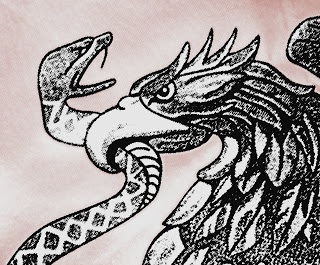After 9 months in the US, I was itching to get back to Mexico. Don’t get me wrong; I love the US for things that Mexico is not. But I am a Mexican, through and through. My parents come from Guadalajara, Mexico but moved over to Australia in the early 80’s. Rather than looking for the ‘American Dream’, like most Mexicans, they went looking for the Australian one. When I moved to Mexico at the end of 2008, after finishing my undergraduate degree, something ‘clicked’. Like coming home. I had the same feeling recently after finishing the first year of the Masters at Bard CEP. There is a song by Luis Miguel “Mexico en la Piel” (Mexico in the skin) that hits the spot.
I started my internship at CEMDA (Mexican Center for Environmental Law for its acronym in Spanish) about a month ago and I love it. Their mission statement translates to:
“To promote the right to a healthy environment, as well as its defense by means of development and effective compliance of legislation and public policy”
CEMDA is heavily involved in issues affecting human rights, especially ones that affect the indigenous. Everything from coastal development for tourism to toxic mining, time and time again, many of the indigenous, who are inextricably linked to their natural environment, have their basic rights taken away from them. CEMDA fights for them and for those who cannot defend themselves, such as the Caretta (also known as the Caguama or Yellow) Turtle. CEMDA fights to preserve the natural beauty that is Mexico and is pushing for increased transparency, the use of cleaner fuels and rapid mass transit. They are arming the federal government with pieces of policy, such as sustainable infrastructure and renewable energy, which will combat climate change. Article 4 of the Mexican Constitution states:
“Every person has the right to a healthy environment for his/her development and wellbeing. The State guarantees the respect of that right. The harm and deterioration of the environment will generate the responsibility for whom provoked it in the arranged terms according to the law”
Over the past 20 years, CEMDA has built a civil society that connects consumers, industry and the local, state and federal government who are concerned about the right to a quality of life that integrates the urban and natural environment.
Finally, CEMDA also does a lot of work in air quality; which has sort of become my specialty. For my undergraduate degree, although I majored in physics, I did some work characterizing aerosols in Sydney, Australia. That developed my interest in air quality and I pursued this area for my master’s thesis, at the University of Guadalajara, where I looked at modeling the air quality in Guadalajara. This worked out to be perfect because earlier this year, the group released ‘Public Policy Recommendations to Improve Air Quality in Mexico”. They are in the second phase of the project and were looking to supplement the recommendations with some technical detail. So it became a win/win situation because I was looking to get some experience in policymaking in Mexico.
So far I’ve done some illustrations of the physical dynamics that causes the meteorological parameters to affect concentration levels, illustrated the locations of cities that have air quality monitoring stations and have tabulated the cities that are most polluted for each contaminant. Right now I am working on summarizing the current policies (if any) at the state level and contrasting them with the WHO guidelines. Down the road, I will be looking to better understand the economic cost of bad air quality in Mexico and will provide the group with a brief analysis. Busy as a happy little honey bee.
Least to say, I spend my days researching these topics, building up my analysis and soaking up Mexico. When it comes to lunch, at 2pm (until 4pm), however, I get busy talking to my colleagues. Probably the most important aspect of working with CEMDA is the fact that I am getting an insider’s look on the policy world in Mexico. Out of the casual and sometimes passionate conversations, I get a better sense of why Mexico is the way it is: so rich in natural resources and culture, yet so poor in socioeconomic and environmental problems. I am, slowly but surely, setting myself up with a network of individuals that are passionate about making sure Mexico goes where it needs to go.
I’ve also started a course in Mexican Sign. When I am ready, being deaf and able to sign will open up the opportunity for me to communicate with the Mexican deaf-mute community. There is a lot of work to be done and you would be a fool to believe that it will all get done, so they say. In a country where corruption is the norm, where political candidates, journalists and pretty much anyone can get killed by drug cartels, business interests and even political parties; I am that fool. I believe we can do it. And I believe it is only a matter of time.
The eagle and the snake on the Mexican Flag


